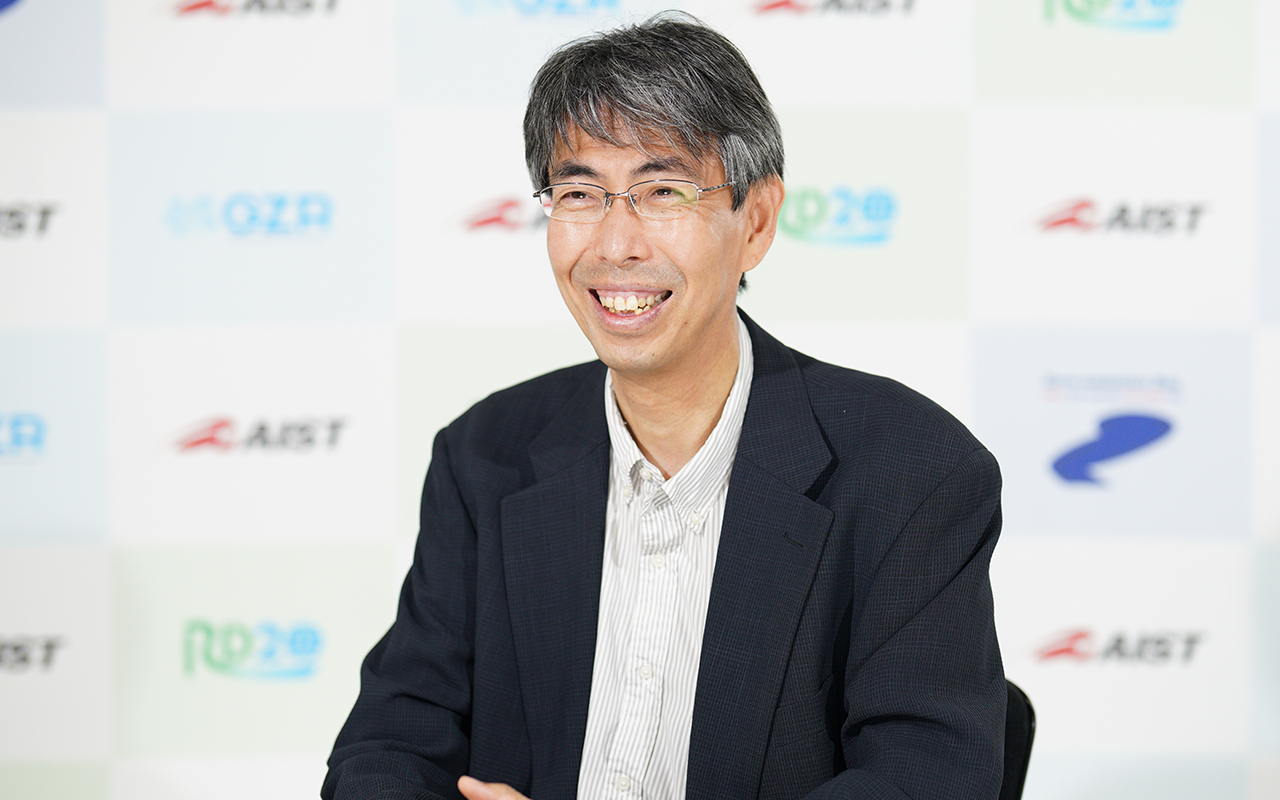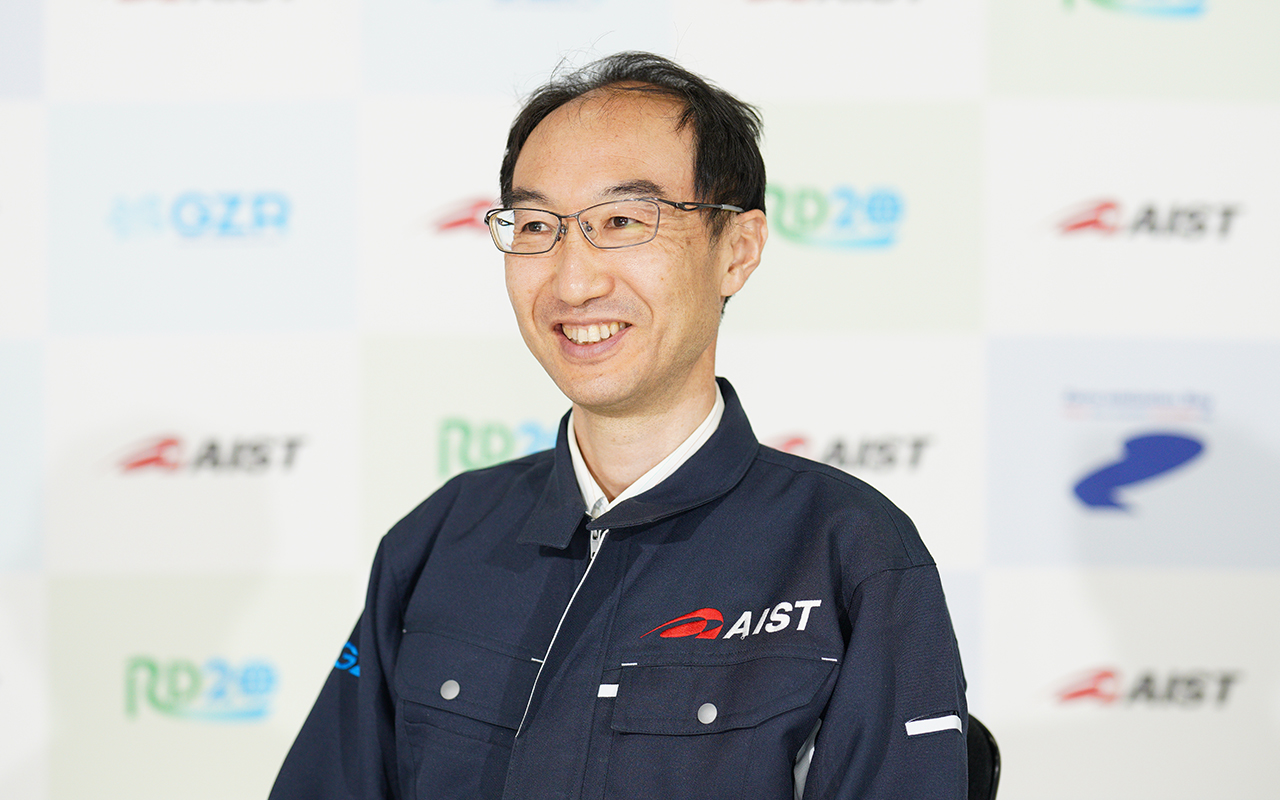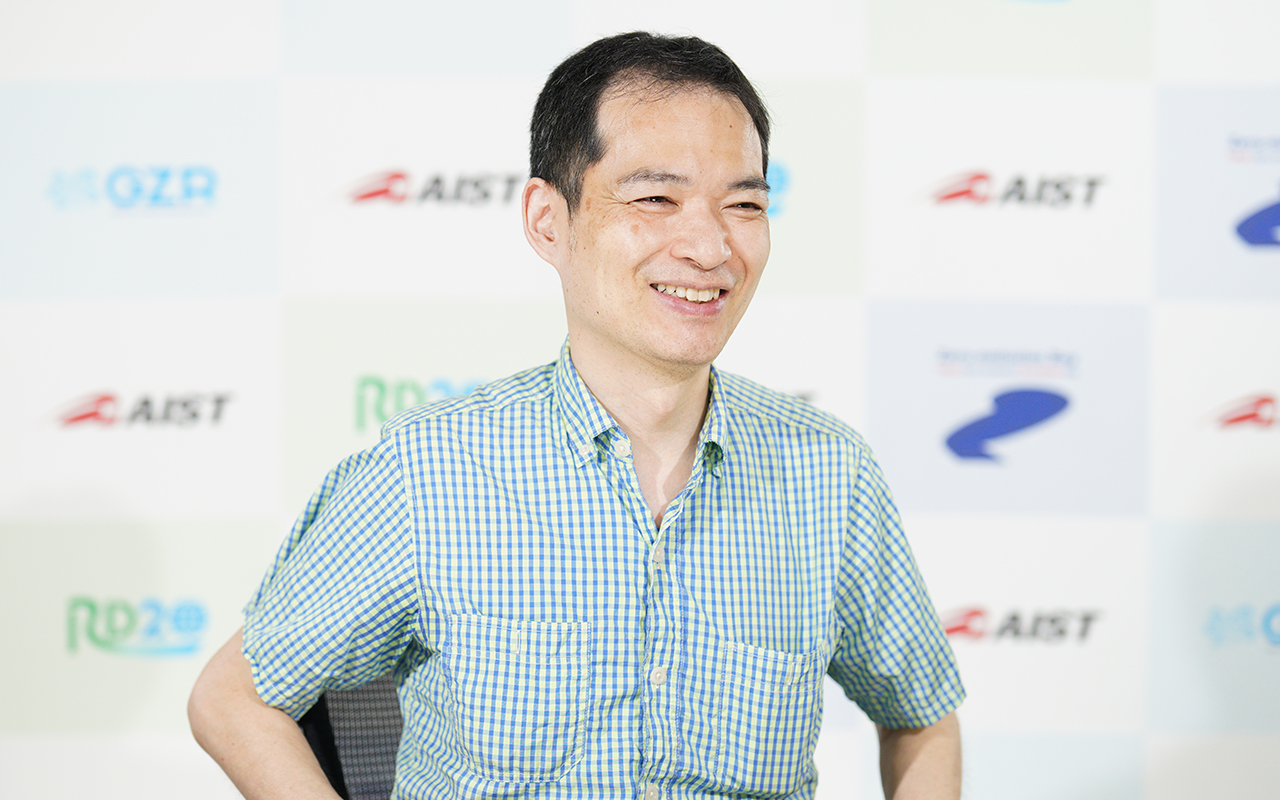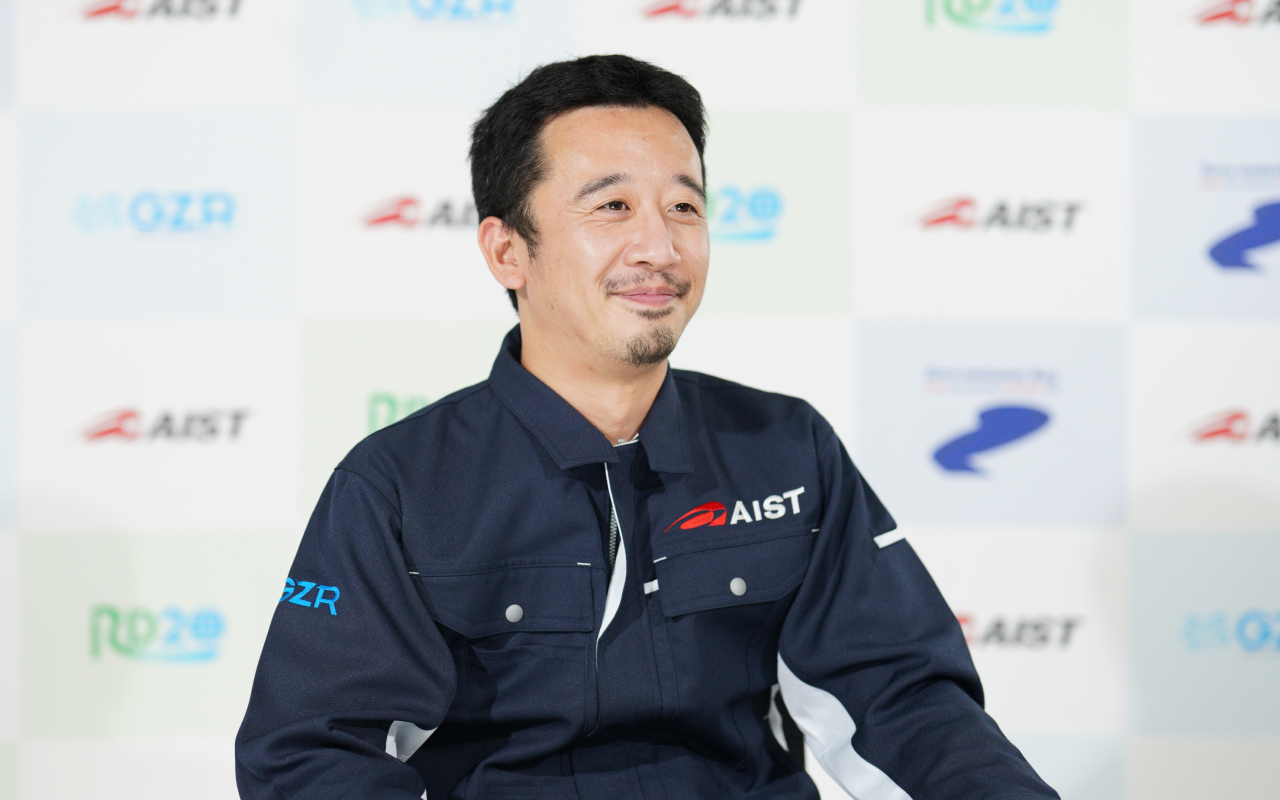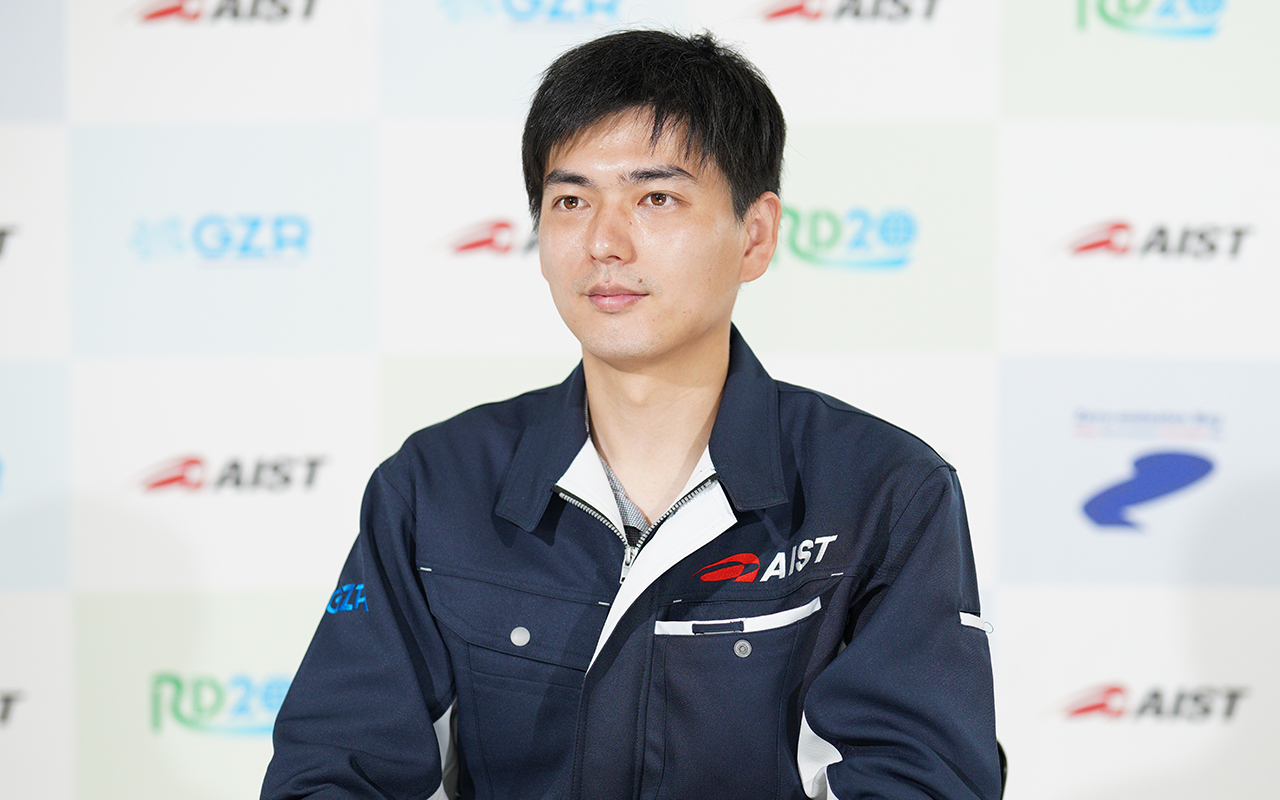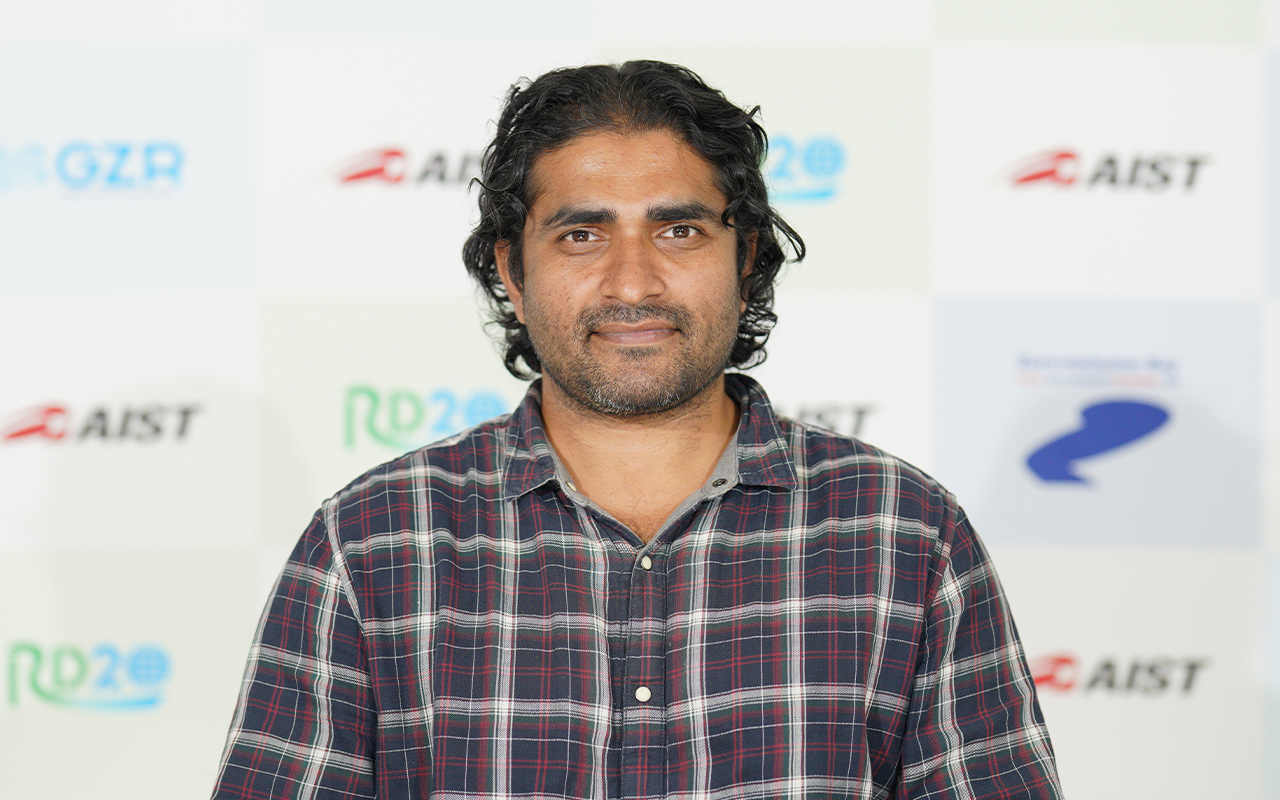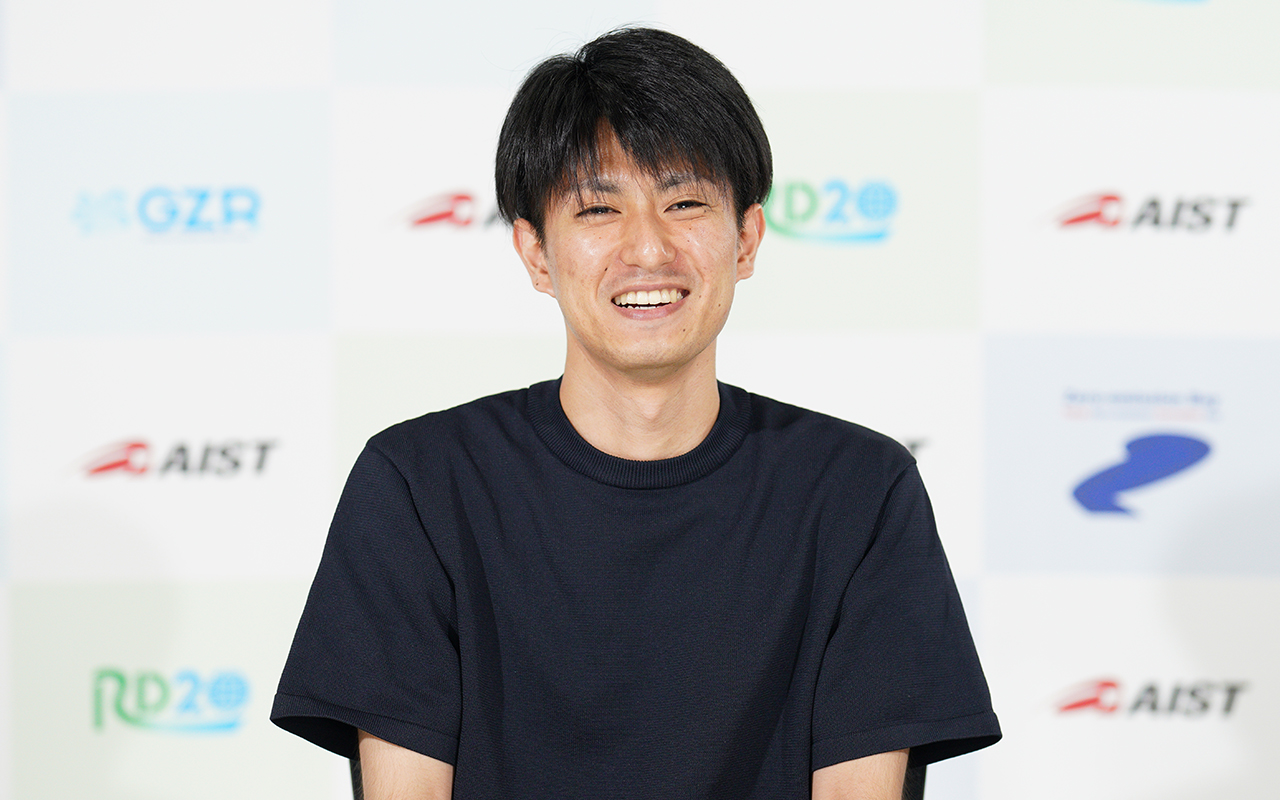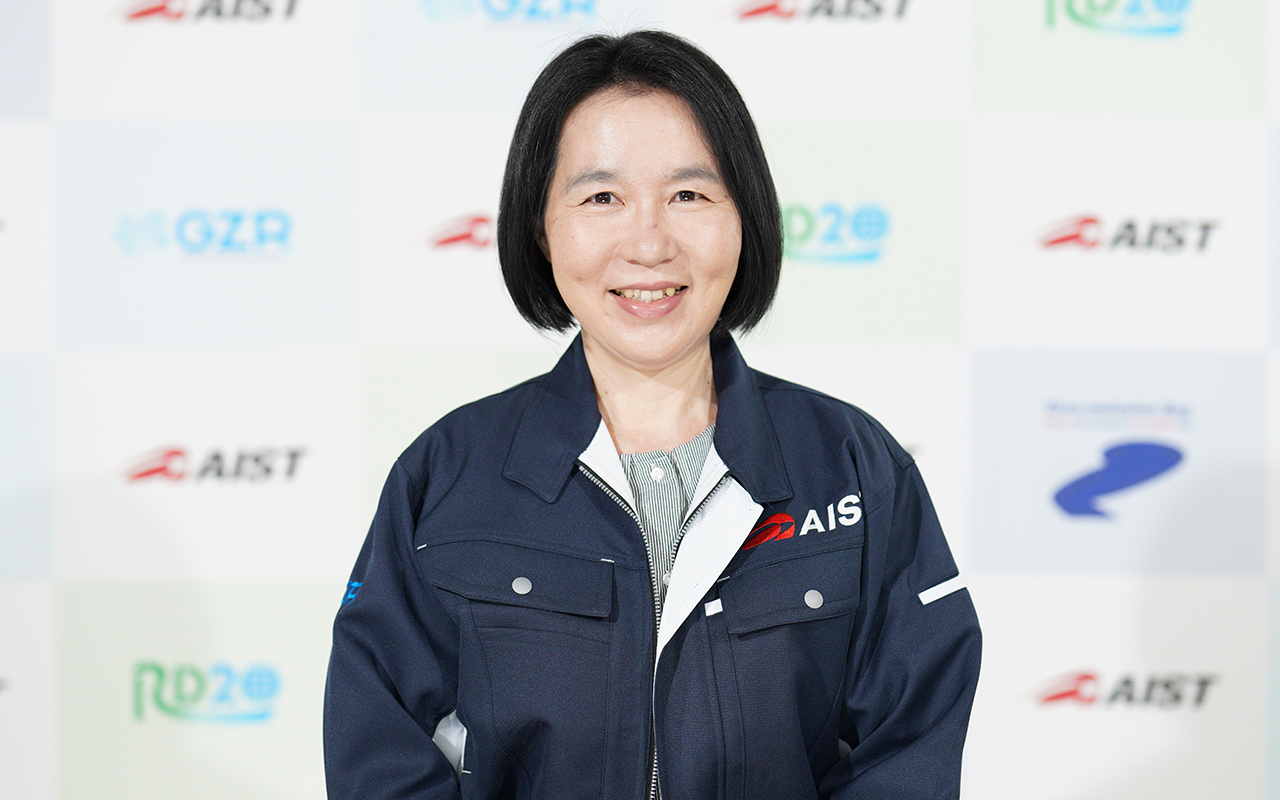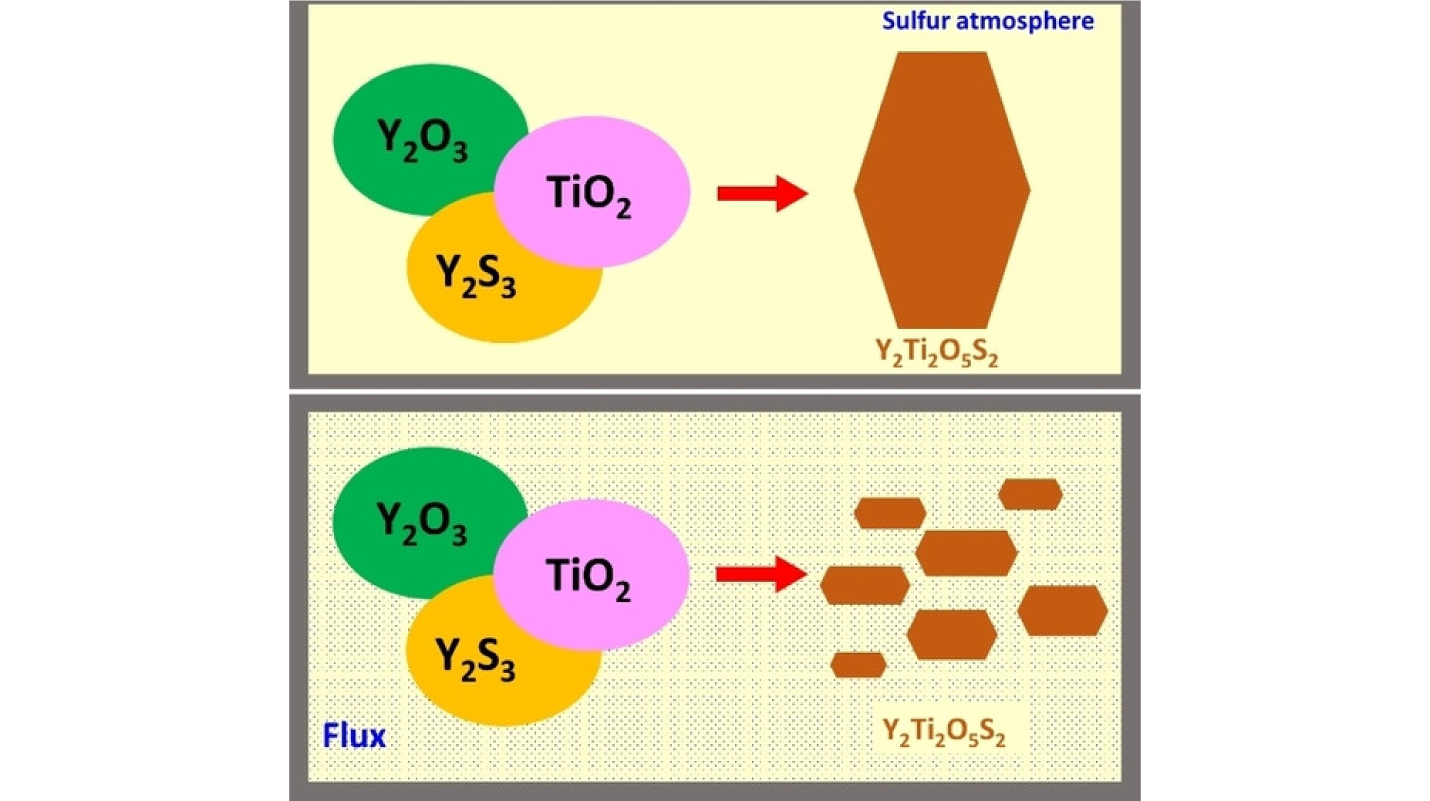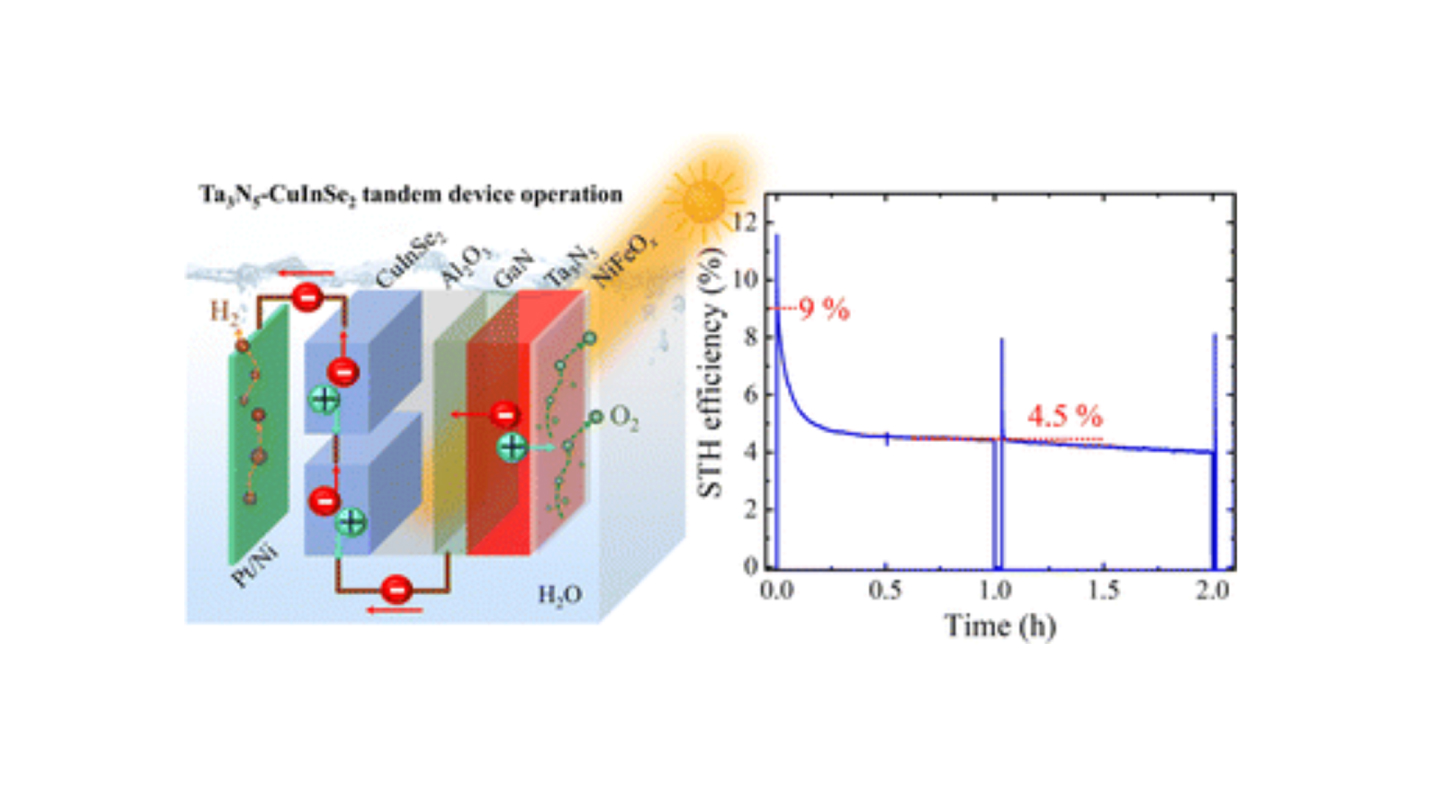Artificial Photosynthesis Research Team
We research methods for producing chemicals in a highly economically rational way, to spread artificial photosynthesis technologies for converting solar energy into chemical energy.

Research themes
- Development of economical hydrogen production technologies based on a photocatalysis-electrolysis hybrid system that combines photocatalytic reactions with a redox mediator such as iron ions
- Investigation into hydrogen and high-value-added chemical production technologies
using semiconductor photoelectrodes and electrode catalysts
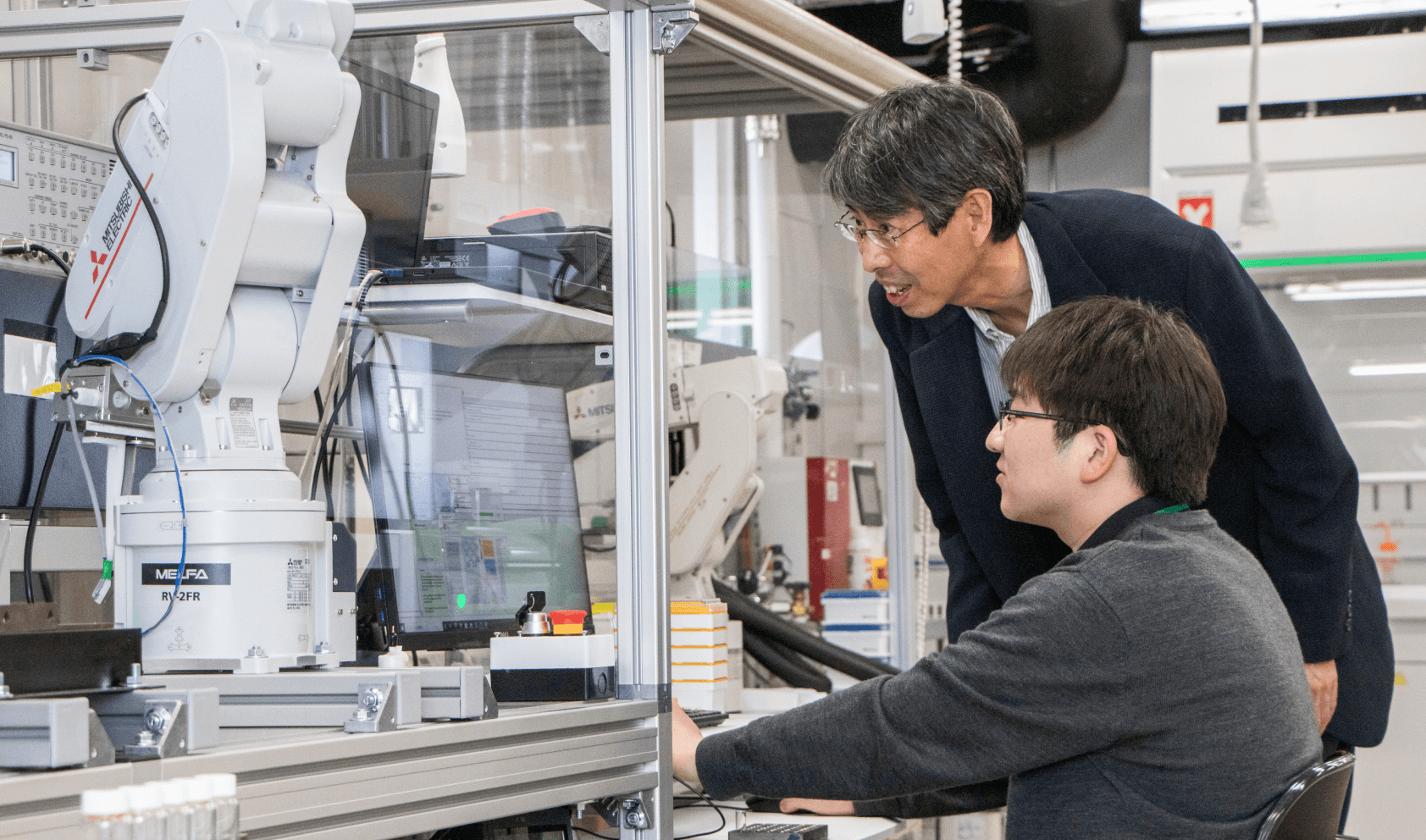
Research Team Leader / Greetings
SAYAMA Kazuhiro
I have been involved in research of photocatalysis and artificial photosynthesis for more than 30 years, ever since I studied at college. I am very fortunate as a researcher to be in an environment where I can devote myself to a single field of study. At GZR, we have deployed a system to search for catalyst materials using robotic technology. This is a deeply familiar area to me, though I wish to actively incorporate new research methods.
Members
KUSAMA Hitoshi
MISEKI Yugo
KODERA Masanori
NANDAL Vikas
OKADA Takumi
OKUDA Masami
KON Yoshihiro
KANEKO Masanori
MAYUMI Daisuke
SUZUKI Nozomi
WANG Nini
Background
● Development of artificial photosynthesis technologies (APT) for utilization of enormous solar energy has been investigated to realize CO2-free and sustainable society.
● APT can convert solar energy into chemical energy (H2, organic compounds, valuable chemicals, etc.), mimicking the mechanism of photosynthesis in plants.
● Highly efficient and economical APT system should be realized using photocatalyst and photoelectrode prepared by simple processes.

Research topics 1: Water splitting into H2 and O2 using photocatalysts
Powdered semiconductor photocatalysts (oxides and non-oxides) for effective decomposition of water into H2 and O2 is developed. The researches are accelerated by using theoretical chemistry and computational chemistry.
Research topics 2: H2 production on photocatalysis-electrolysis hybrid system
“Photocatalysis-electrolysis hybrid system” is AIST original technology, and low-cost H2 production with solar energy can be realized by the combination of large photocatalysis pool and low-bias water electrolysis using Fe3+/Fe2+ ion redox mediator.
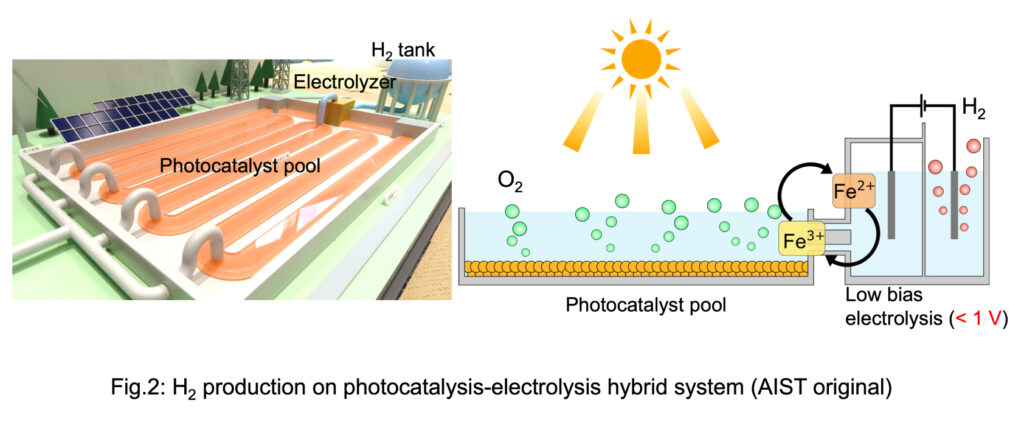
Research topics 3: Photo-electrochemical process for production of H2 and valuable chemicals to improve economical efficiency
High-value-added chemicals (hydrogen peroxide, hypochlorous acid, etc.) can be produced on oxide photoelectrodes using solar energy, with producing H2 on the counter electrode. These chemicals can be used for sterilizing, bleaching, cleaning, etc. The product selectivities can be ~100% by AIST technology.
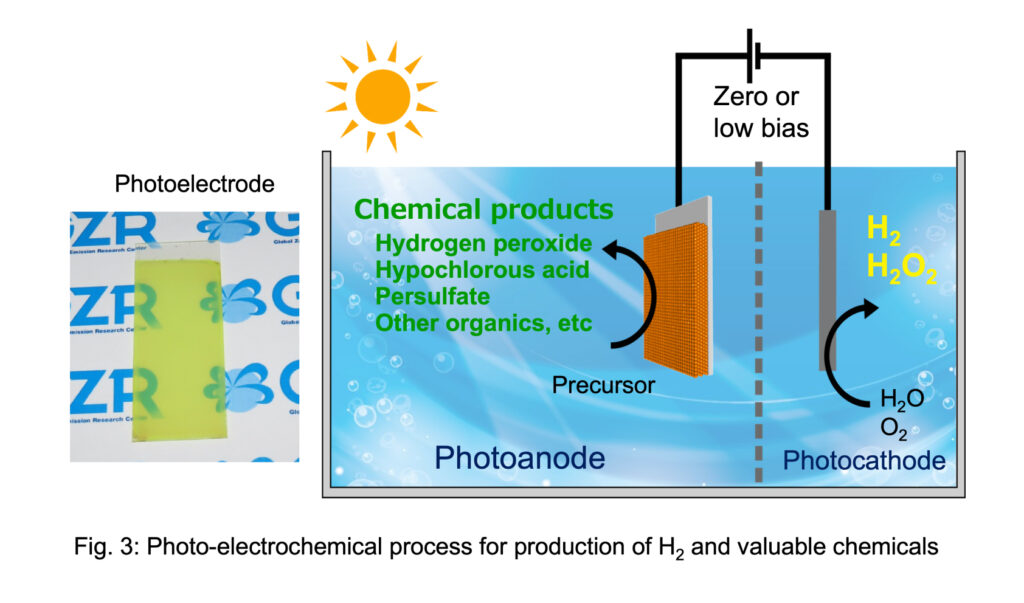
Future plan
・ Proposing of innovative systems with economic rationality and reduction of CO2 emission effect by the fusion of artificial and natural photosynthesis.
・ Development of high-throughput screening system for materials on photocatalyst and photoelectrode. Utilization of machine learning for big data as research DX.
Video
Research
Highlights
Research Teams
- Organic-inorganic Hybrid PV Team
- Multijunction PV Team
- Thermoelectrics and Thermal Management Team
- Fundamentals of Ionic Devices Research Team
- Artificial Photosynthesis Research Team
- Hydrogen Production and Storage Team
- Carbon-based Energy Carrier Research Team
- Smart CO2 Utilization Research Team
- Resource Circulation Technology Research Team
- Environmental and Social Impact Assessment Team


